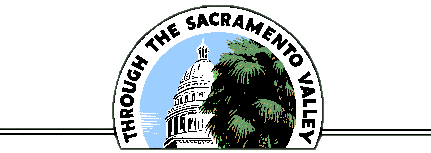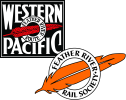THE WOODLAND BRANCH:
A SACRAMENTO NORTHERN SUCCESS STORY
Of the ten branch lines built by the Sacramento Northern and its predecessors, the Woodland Branch was the most successful. Indeed, today it remains the only former SN branch still in regular freight operation.
Incorporated as the Sacramento & Woodland Railway Company on July 20, 1911, the Woodland Branch began its life as a dummy company under the control of the Northern Electric Railway. It was also closely associated with the Vallejo & Northern Railway, another line in the Northern Electric family, and shared several of the same officers. At various times the Woodland Branch figured in the Northern Electric's plans to reach San Francisco Bay. It was also intended to be the southern end of a second mainline extending north to Hamilton.

Construction began in 1911 and proceeded quickly, once the M-Street drawbridge over the Sacramento River was finished. Leaving the 8th and J-Street depot, the line proceeded down city streets to the river crossing. On west bank of the Sacramento River the grade turned northward. After crossing the SP mainline at Mikon Tower, the branch ran parallel to the Sacramento River for several miles on fills, trestles, or at some places running along the huge levees which held the river in check. At Elkhorn the track turned almost due west and soared 20 feet above a floodplain on the 8,000-foot long Elkhorn Trestle. At the west end of the trestle, the line descended to ground level. A crossing with the SP's West Valley mainline was made on the east side of Woodland, again guarded by a tower. From here the track meandered down Main Street for five blocks to a terminal at Second Street.

The end of the line was a wye located in the intersection at Second and Main. The north leg extended a short distance up Second Street to end in front of the Woodland Opera House. The south leg ran into the imposing depot on the southwest corner of the street. The striking depot (paid for by the V&N) was covered with stucco in the Mission style popular in California at the time and featured a huge tower near the center of its facade. The track ran through the building in an arcade, which allowed at least some passengers to board trains out of the rain. The depot included a waiting room, a ticket office, an express agency and a small store selling magazines and refreshments. A generous yard behind the station allowed equipment to be stored between runs.
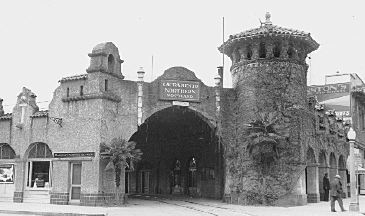
As was typical of the Northern Electric, the line used mostly uncovered third rail for power throughout much of its length. Cars took power from overhead wire through Sacramento and Woodland streets. A substation was located at Elkhorn, near the east end of the big trestle. This began as a portable unit, but the equipment was later moved into a permanent building.
The entire line was finished in time for a grand opening on July 4, 1912, in conjunction with the holiday. An eight-car train carried passengers between Sacramento and Woodland for free all day. At the head was Sacramento & Woodland combine 1, actually Northern Electric 108. Regular service began July 15, 1912.
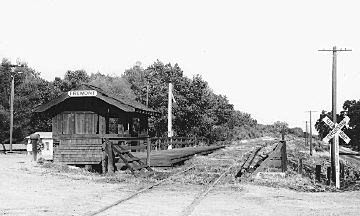
Strangely, the Woodland Branch did not begin life as a branch at all, but was actually an extension of the mainline from Sacramento. When the branch opened to revenue service in 1912, through passenger trains were routed from Chico to Woodland, via Sacramento. This odd arrangement ended in 1914 when the Northern Electric Railway and its subsidiaries slid into bankruptcy. The new managers dropped the Northern Electric's expansion plans and the branch settled down to what it did best, providing convenient local passenger service between Woodland and Sacramento, and serving local freight customers.

The trip between the two cities took between 35 and 40 minutes, and covered about 18 miles. Under the Northern Electric Railway ownership, the trains were numbered in the 30 series. Later under the Sacramento Northern they were numbered in the 40 and 50 series. Even as late as 1939, eight round trips were made on weekdays. The line was so busy that it normally had two sets of equipment assigned. After S&W 1 was returned to mainline service, the usual motor was the classic Niles combine 101, usually pulling Niles trailer coaches 221 or 223. The second rush hour train was frequently headed by home-built combine 127 with Niles trailer coach 220. Among the other cars which operated to Woodland were 103, 129, 1003, 1004 and 1009.
It was on the Woodland Branch that Holman motor 1004 was involved in the only serious accident in the branch's history. The big motor smashed into a rice truck near Roseland and tipped over in October 1938. Although no one was killed, the combine never ran again. It was towed to Chico where it sat on the deadline until scrapped in the fall of 1941.

In March 1940 service was cut back to a mere four round trips a day, with no trains on Sundays or holidays. This caused such a storm of indignation from the loyal riders, that Sunday service was restored to three round trips. Daily service remained at four trains until October 31, 1940 when all passenger trains ended. Cincinnati-built 1009 did the sad honors on the farewell run, ending 28 years of interurban trains to Sacramento.
Industries around Woodland provided good business for the Sacramento Northern, and kept the branch profitable even without passenger trains. The most important industry was Hershel California Canning, which could take fourteen cars at a time. Diamond Match Company, General Petroleum Corporation, Rose Valley Produce, Shell Oil, West Valley Lumber Company, and Union Ice Company were all served directly by the electric trains. Barden Steel, Cranston Brothers Hardware, International Tractor, and Massey-Harris Tractor were frequent users of the team track and freight house. Additionally, many loads of produce were shipped directly from the team track, the cars being cooled by ice loaded from a truck with a portable conveyor. At one time there was even an SN-owned livestock pen at East Woodland. The only sizeable industry between Woodland and Sacramento was the Conaway Ranch Company, which had a spur off the west end of the Elkhorn Trestle where they loaded large quantities of grain and rice.
The Woodland Branch was important enough to have a regularly scheduled round-trip freight train. In the years before World War II, it was called out of Sacramento at 9 a.m. as No. 196, arriving in Woodland at 11:50. The return job departed at 1:30 p.m. and tied up at 4 p.m. Motive power was provided by the Sacramento switcher pool, frequently one of the 650-class motors. There is some evidence that the train was pushed back to Sacramento with the motor on the rear, and that it did not carry a caboose. In later years the branch job was operated as an extra, and there was no schedule. During the years immediately after the War, box motor 601 was assigned to the run.

Change was inevitable on the Woodland Branch. After a child was electrocuted in 1944 on the main line near Del Paso, the state moved to outlawed uncovered third rail distribution systems. The WP management was very anxious to turn off the power, but it was not until February 1, 1947 that enough diesel locomotives were on hand and their crews trained. After passenger service ended, occasional freight cars continued to be shoved down Woodland's Main Street to the freight house behind the depot, much to the annoyance of a growing number of motorists. The SP crossing and all track to the depot were taken out of service on January 31, 1953. A small yard east of the tower became the end of the line, and remains so to this day.
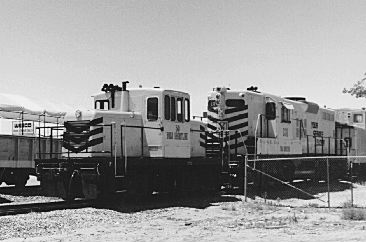
In 1982, the Union Pacific took control of the Western Pacific, dragging the Sacramento Northern with it into history. Like most of the surviving large railroads, the UP did not look kindly on branch lines. In an effort to cut costs, in 1992 the Union Pacific decided to sell off the Woodland Branch. The Yolo Short Line, which had been operating the former SN Clarksburg Branch since 1990, took over the operation. By providing customized service, the YSL has been very successful with the line's customers. Additionally, the management has operated passenger trains in conjunction with Sacramento Valley Historical Railways. Former Southern Pacific 1233, an 0-6-0, was removed from the local fairgrounds and restored to operation. Rides behind the steam locomotive have become a very popular local attraction.
